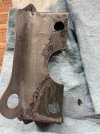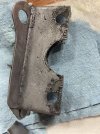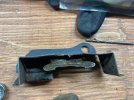JohnMartin
Promoted Users
I sandblasted a couple engine tin pieces from an old vw. They came out really nice. I figured I needed to etch the metal so I sprayed them with Ospho. Did I need to do that ? Should I have just hit it with 80 grit or will the ospho do the trick ?




